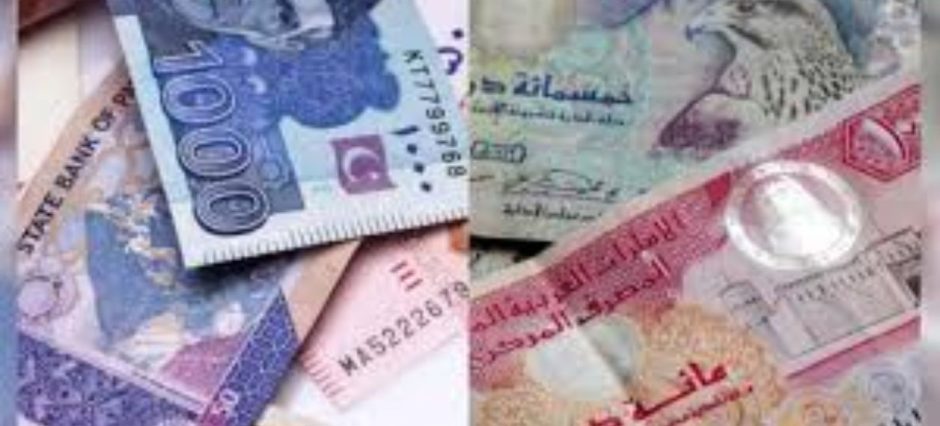Currency exchange plays an important role in Pakistan’s economy. Every day, people check the latest currency exchange rates Pakistan for travel, business, or remittance purposes. These rates change frequently due to shifts in the global forex market and local economic conditions.
As we move through 2025, understanding how exchange rates work can help Pakistanis make better financial decisions. Whether you are sending money, planning a trip abroad, or trading internationally, knowing how currencies move against the Pakistani Rupee (PKR) is essential.
Understanding Currency Exchange Rates in Pakistan
Currency exchange rates show how much one currency is worth compared to another. For example, if 1 US Dollar equals 280 Pakistani Rupees, this means one dollar can be exchanged for that amount.
In Pakistan, exchange rates are mainly affected by the demand and supply of foreign currencies, inflation, interest rates, and government policies. The State Bank of Pakistan (SBP) publishes official interbank rates every working day. These rates are used by banks and financial institutions for international transactions.
However, local traders, travelers, and individuals often rely on open market rates, which may be slightly higher than interbank rates.
Interbank vs. Open Market Rates
There are two main types of exchange rates in Pakistan:
1. Interbank Rate:
This is the official rate set by the State Bank of Pakistan. It is used for trade, remittances, and institutional transfers.
2. Open Market Rate:
This rate is determined by private currency exchange companies and money dealers. It reflects real-time demand from the public and businesses.
The difference between these two rates is usually small but can grow during times of economic instability or high foreign demand.
Major Currencies Traded in Pakistan
Pakistan trades multiple foreign currencies daily. The most popular ones include:
- US Dollar (USD) – The most commonly used currency for trade, remittance, and investment.
- Saudi Riyal (SAR) – Popular due to the large number of Pakistani workers in Saudi Arabia.
- UAE Dirham (AED) – Commonly exchanged for remittances from the UAE.
- British Pound (GBP) – Used for education, business, and travel purposes.
- Euro (EUR) – Important for trade with European countries.
Each of these currencies influences Pakistan’s economy differently. For instance, remittances in SAR and AED play a major role in supporting Pakistan’s foreign reserves.
USD to PKR Rate in 2025
The US Dollar to Pakistani Rupee rate remains the most closely watched exchange rate in the country. In 2025, the rate continues to fluctuate due to Pakistan’s trade balance, inflation, and global oil prices.
A stronger dollar often puts pressure on the Rupee, increasing import costs but benefiting exporters. Many banks and forex websites update the USD to PKR rate several times daily to reflect market changes.
Saudi Riyal (SAR) and UAE Dirham (AED) Rates
The Saudi Riyal (SAR) and UAE Dirham (AED) are vital for Pakistan’s remittance economy. Millions of overseas Pakistanis working in Gulf countries send money home every month.
Because these currencies are linked to the US Dollar, their value in Pakistani Rupees tends to move in the same direction as the USD.
For example, if the dollar strengthens globally, both the Riyal and Dirham usually rise against the Rupee. This impacts money transfers, import payments, and local exchange rates.
To stay informed about other related currencies, you can check the latest Pound to Rupee conversion in Pakistan for a broader comparison.
Why Exchange Rates Change Daily
The currency exchange rates Pakistan change every day because of several key factors:
- Global Forex Market: Changes in international demand affect the Rupee’s value.
- Inflation and Interest Rates: High inflation weakens the Rupee, while stable interest rates attract foreign investment.
- Political Stability: Uncertainty in government policy can impact investor confidence.
- Trade Deficit: When imports are higher than exports, the demand for foreign currency rises.
- Remittances: An increase in remittance inflows can help stabilize the Rupee.
Even small changes in these factors can cause noticeable differences in the daily exchange rate.
Impact of Currency Exchange Rates on Pakistan’s Economy
Exchange rates directly affect prices, trade, and living costs in Pakistan. When the Rupee loses value, imported goods such as oil, machinery, and electronics become more expensive.
On the other hand, a weaker Rupee can boost exports because Pakistani goods become cheaper for foreign buyers.
For individuals, changing rates influence travel expenses, tuition fees, and remittances. That is why staying informed about currency exchange rates Pakistan is helpful for both businesses and households.
How to Check Live Exchange Rates
You can check live exchange rates through several reliable sources:
- Bank Websites: Most major banks like HBL, UBL, and Meezan Bank display daily forex rates.
- Currency Exchange Companies: Authorized dealers post updated rates online and in their branches.
- Online Forex Platforms: Global websites such as XE, Bloomberg, and Reuters show real-time data.
- State Bank of Pakistan (SBP): The SBP’s official website lists daily interbank rates.
It’s best to compare different sources before making any large currency exchange transaction.
Tips for Getting the Best Exchange Rate
- Exchange money only through licensed banks or exchange companies.
- Avoid exchanging during weekends or holidays when markets are closed.
- Track trends for a few days to find a favorable rate.
- Keep receipts for future transactions and travel purposes.
Being careful and informed can help you save money when converting foreign currency.
FAQs
Q1: Why do exchange rates in Pakistan change daily?
Rates change daily because they depend on global market trends, trade flows, and local economic factors.
Q2: What is the difference between the interbank and open market rates?
Interbank rates are official SBP rates for institutions, while open market rates are public trading rates offered by dealers.
Q3: Which currency is most traded in Pakistan?
The US Dollar (USD) is the most traded and widely used foreign currency in Pakistan.
Q4: How can I get the latest USD, SAR, or AED rates?
You can check daily updates on bank websites, currency exchange apps, or the SBP’s official platform.
Q5: Do remittances affect Pakistan’s exchange rate?
Yes. Higher remittances increase foreign reserves and help strengthen the Rupee.
Conclusion
The currency exchange rates Pakistan play a crucial role in shaping the country’s economy. They influence imports, exports, inflation, and the cost of living for ordinary citizens.
Keeping track of USD, SAR, and AED rates is especially important for workers abroad, students, and traders. With the help of digital platforms and bank updates, it’s now easier than ever to stay informed.
As 2025 continues, monitoring these rates regularly can help Pakistanis make smarter financial choices, save money, and plan better for the future.











